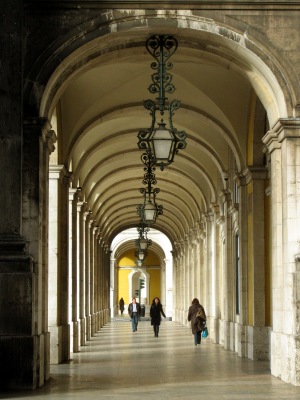Think about the last bottle of wine you drank. Was it sealed with a natural cork? A synthetic plastic closure? A screw top cap? Where does cork come from, and what’s with all the buzz about cork trees being endangered? To investigate, we ventured off to Alentejo, a rural region in south-central Portugal, and one of the world’s largest sources of cork oaks. All told, Portugal produces about 75% of the world’s cork, and about 75% of this goes into wine bottle stoppers. About 33% of all cork trees grow in Portugal, and 95% of these are in the Alentejo region.
At Herdade da Maroteira, Philip Mollet guided us on a tour of his 540 hectare farm. Much of the land is forested, with approximately 2/3 covered by cork forest, 1/3 covered by stone oaks, and some cleared land for vineyards and livestock. Mollet is a 5th generation farmer, whose family originally hailed from Britain. As the story goes, in the beginning there were two brothers who were on their way to Australia. They stopped in Porto to make repairs on their boat and look for cork stopper resources. The brothers ended up traveling to Alentejo, where they found this particular cork farm. One brother continued on to Australia, while the other stayed in Portugal. Later on, the brothers arranged for a cultural swap, with one brother sending eucalyptus to Portugal and the other brother sending cork acorns to Australia. However, the acorns that were sent were sterilized—nothing like a little sibling rivalry to help foment family feuds!
Continue reading Cork Forests: Actually, Money Does Grow on Trees







